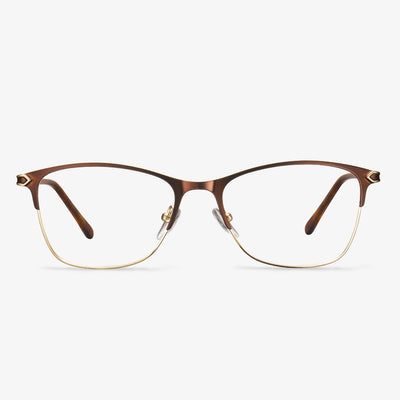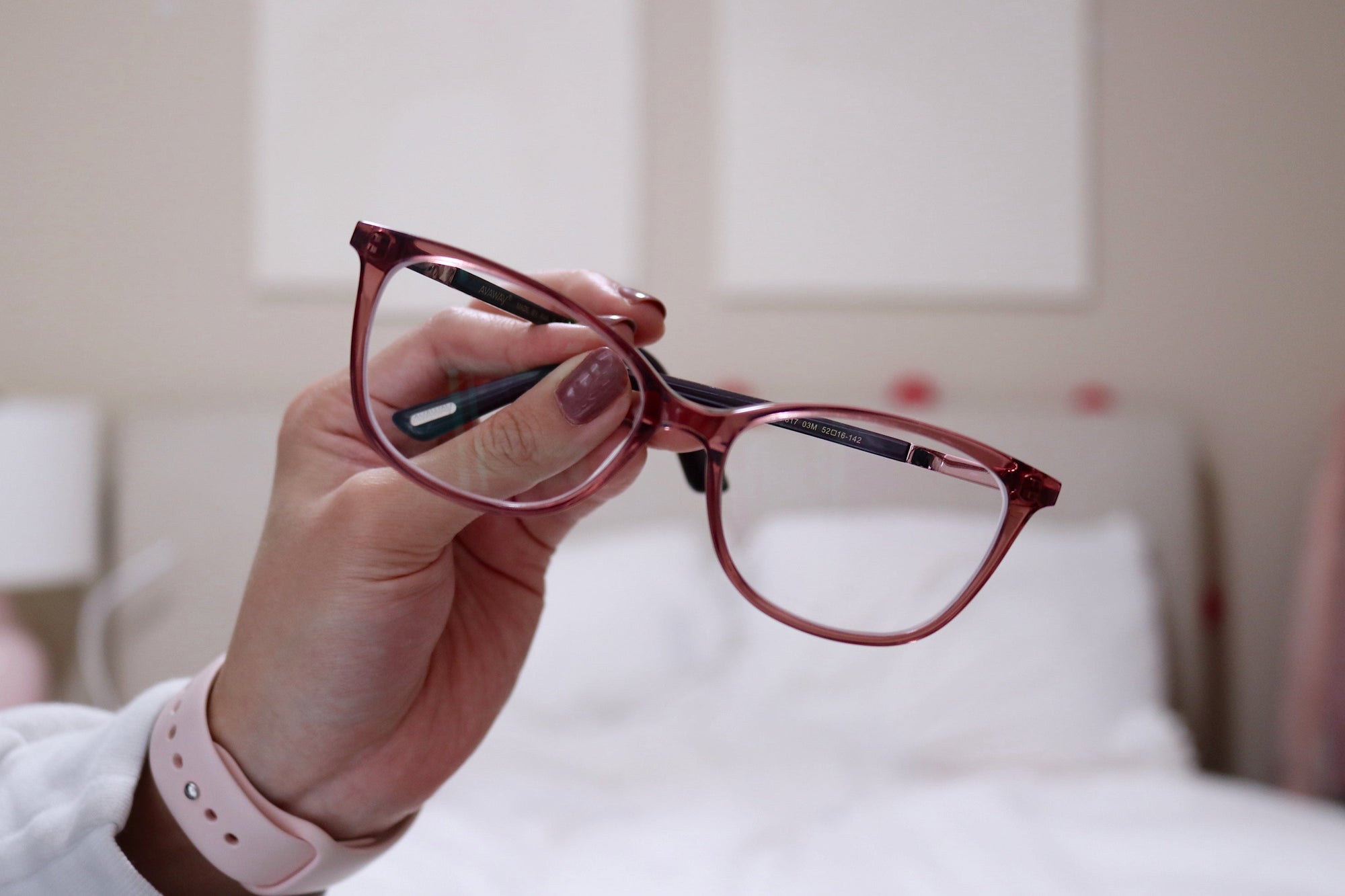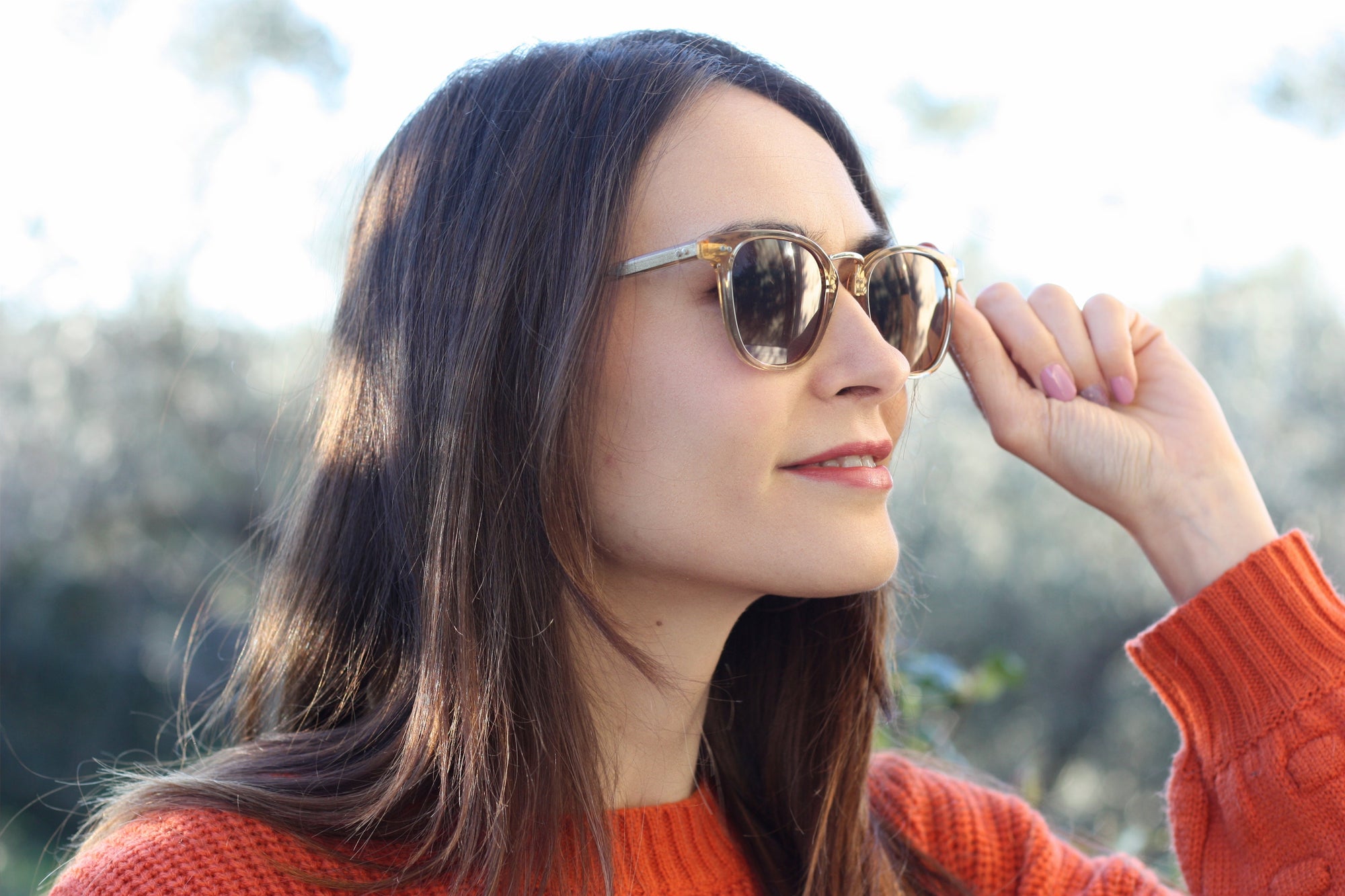What Should Be Considered When Buying Blue Light Glasses?
Be wary of “eye protection” claims. Some businesses advocate their anti-blue light products how miraculous.
Do not try the lens from the unknown lens manufacturer or lens factory. A professional lens factory needs more than ten years or even decades of accumulation, so do not be blinded by dazzling pictures and brand image.
Parameters of lens material selection
Abbe number
Since the refractive index of the lens material varies for the light of different wavelengths, and white light is made up of various colors of light of different wavelengths, the dispersion phenomenon occurs when the lens refracts white light. The dispersion coefficient is an important index to identify the sharpness of lens imaging, which is usually indicated by Abbe number (Abbe number = dispersion coefficient). The larger the Abbe number, the smaller the dispersion, and vice versa, the smaller the Abbe number, the larger the dispersion, and the worse the resolution of the image.
Impact resistance
Humans have been using glass lenses for about 300 years, and it was not until 1947 that the first resin lenses made of CR39 were produced. A big reason for using resin lenses is their safety, i.e. impact resistance. Only lenses that pass the Drop Ball Test are considered safe. Combining the above two parameters, we can compare different lenses.
Study On the Night Driving Glasses
Researchers at Harvard's Schepens Eye Research Institute recently conducted a study to find out if wearing night driving glasses while driving at night is good for vision. All 22 participants drove under four conditions that simulated night driving, wearing either yellow night driving glasses or glasses with clear lenses. Each participant drove with or without the headlight glare simulator activated to simulate the effect of oncoming traffic. The study found that wearing glasses while driving at night didn't seem to improve: how well the participants were able to recognize pedestrians at night and negative effects of headlight glare on pedestrian detection. Our data suggest that wearing yellow lenses while driving at night does not improve performance at the most critical task: pedestrian detection, the study's authors said. A small 2019 study showed that night driving glasses can actually slow down visual reflection by a fraction of a second, making night vision worse.
A Suitable Nose Pad
The Nose pad must fit the nose to the maximum extent possible. If they do not fit, the opticians have special pointed tools. It's best not to adjust the nose pad yourself. A lot of store staff are afraid to adjust the nose pad, just because it is difficult. The general store processing master will adjust the nose pad. The nose pad can be adjusted on the premise of the same rake angle.
Is the prescription for glasses the same as for contact lenses?
A prescription for contact lenses is not the same as a prescription for regular glasses. The two types of glasses are quite different because glasses are located about 12mm from the eye, while contact lenses are located directly on the surface of the eye. If you want to wear both contact lenses and regular glasses, you'll need two different prescriptions. Contact lenses are worn in the eyes, and the frame is at a distance from the eye, although the distance is not large, definitely can affect certain degrees.
What are the best night driving glasses to buy?
While lights on the road can make for a safer driving environment, they can take a toll on your eyes. If you often drive at night and feel eye strain or difficulty seeing in low light. If two cars are driving opposite each other at night and bright lights are turned on, it is almost impossible for the drivers of both cars to see the road ahead because the light is so annoying to the eyes. You might want to think of wearing a pair of night driving glasses.
The disadvantages of progressive lenses
- The field of view in the near and middle distances is relatively narrow.
- The adaptation time is longer and patients with greater astigmatism are not suitable for wearing.
- The peripheral aberration is large, and there will be large astigmatism in the periphery.











































